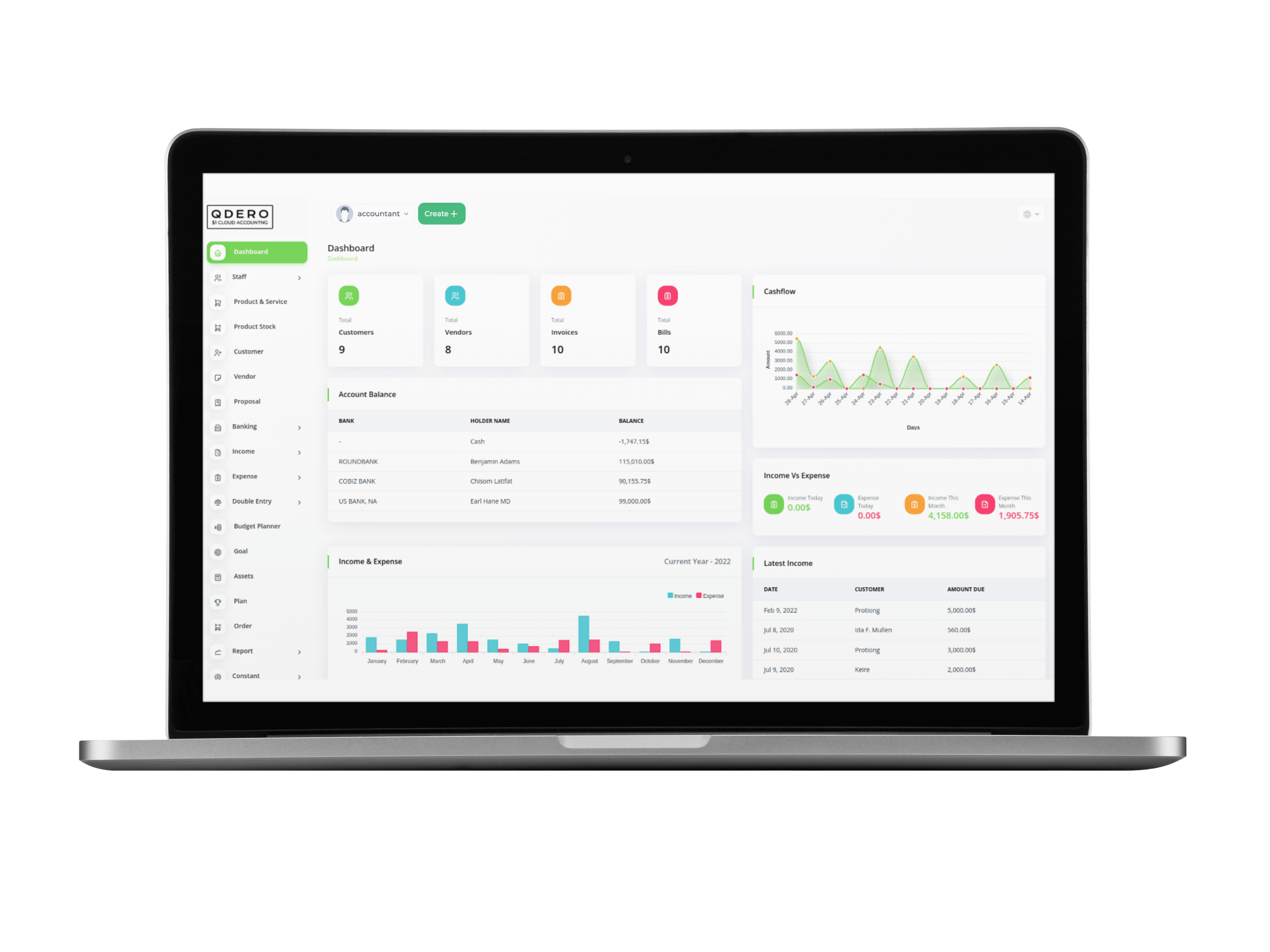Full featured, easy to use Cloud based accounting from just $1.00.
Cost effective cloud based accounting software built to help small businesses and freelancers succeed.


Cost effective cloud based accounting software built to help small businesses and freelancers succeed.


From invoicing to expense tracking to accounting, QDERO has all the tools you need to manage your business finances online, from just $1.00


See your financials online anytime, anywhere on your computer, tablet or phone. Run your business from anywhere and know your cash flow position.
Cloud accounting (or online accounting) has all the same functionality as desktop accounting, but moves the whole process to the cloud and expands upon it. There’s no desktop application – you log in to an always-up-to-date online solution and all data is safely stored on a cloud server. Easily access your accounts anywhere.
Get a convenient summary of different finacial balances across your business.
Go granular and generate multiple reports, including income, expenses, product categories, taxation and many more.
Create dashboards with an overview of your revenue and expenses - be it by source, category or a payment method.
Generate invoices and manage bills. Use 1 of 10 attractive templates to customise them.
Everything you need to manage your cloud based accounting. Keep track of all of your payments, invoices, expenses, etc. in one place with zero headache.


Send professional invoices to clients and start getting paid faster. QDERO makes invoicing really quick and so simple.
No-nonsense, simple pricing that wont hurt your pocket.
You have Free Unlimited Updates and
Premium Support on each package.
You have Free Unlimited Updates and
Premium Support on each package.
You have Free Unlimited Updates and
Premium Support on each package.